“There’s been a hunger for an Obi-Wan series for some time – to be able to give that to them now is really exciting”: Ewan McGregor, Moses Ingram and Deborah Chow at the press conference for Obi-Wan Kenobi

Obi-Wan Kenobi is the latest installation in the Star Wars franchise, following the titular Jedi ten years after the events of Star Wars: Episode III – Revenge of the Sith.
We heard from Ewan McGregor, who reprises his role as Obi-Wan for this TV miniseries, as well as executive producer Deborah Chow and Moses Ingram, who plays the villainous inquisitor Reva Sevander.
We know you have talked for years about wanting to return to this galaxy. What was it about this show and this story that excited you?
Ewan McGregor: Well, it was a very long, slow process of coming back to playing him, I guess. It was born of two things.
I think I was just asked a lot. At the end of every interview I ever did for years I was asked two things: would I do the sequel to Trainspotting, and would I ever play Obi-Wan Kenobi again. And so, I just started answering it honestly and I think I became more aware of the fondness that the generation that we made the prequels for have for those films. Because when we made them, we didn’t hear that. We didn’t get that response. So, gradually, I started realising that people liked them and that they meant a lot to that generation. So that warmed my feelings about them, I guess, or my experience of being in the Star Wars world.
And then Disney just asked me to come in one day for a meeting because they kept seeing on social media that I’m saying I would like to play Obi-Wan Kenobi again; it looked like I was touting for work at Disney’s door. They got me in and asked me if I meant it and I said, “Yeah, I would love to play him again, I think there’s got to be a good story between Episode III and Episode IV.” And that’s what we found, after a lengthy process of exploring some different storylines. I think we’ve ended up with a brilliant story and one that will satisfy the fans sitting between those two episodes.
Deborah, you’re no stranger to the Star Wars universe, working on The Mandalorian. What was it about Obi-Wan Kenobi, this character and this story, that excited you?
Deborah Chow: I was excited at the idea of getting to do a limited series for one, just because you get to tell a bigger story, but you also have the time to really get into the character. So, I think, first and foremost, I was the most excited about doing a character-driven story and having the opportunity to get more depth and have more time to get to know the character.
Moses, what about you? You’re new to this galaxy. What was it that excited you most about joining the story?
Moses Ingram: I think it came to me just like everything else does, but I didn’t know that it would be Star Wars. And I think, when I read the script, that was the thing that attracted me the most, even though it was, like, dummy sides. But, later on, realising that it was edgy and fun and cool… I just… I couldn’t say no. I mean, it’s Star Wars.
What was your reaction when you learned more?
MI: Surprised! I was surprised. I mean from what I knew of Star Wars, I didn’t realise it was that dangerous. It felt dangerous what I was reading, and I was like, “Oh, I like this. I’m into this. Yeah.” So I was really excited.
This story takes place about ten years after Revenge of the Sith – this is a different Obi-Wan from we’ve seen before. Ewan, what makes this version different from the previous screen adaptations?
EM: I think because of what happens at the end of Episode III – Revenge of the Sith. At the end of the third episode, the Jedi Order is all but destroyed and those who aren’t killed have gone into hiding, and they can’t communicate with one another. So for ten years, Obi-Wan has been in hiding; he can’t communicate with any of his old comrades and he’s living a pretty solitary life. He’s not able to use the Force. So, in a way, he’s lost his faith – it’s like somebody who’s stepped away from their religion, if you like. And the only responsibility in his past life is looking over Luke Skywalker, who he’s delivered to Uncle Owen and Aunt Beru – that’s his only link to his past. So it was interesting to take a character that we know and love from Alec Guinness’s creation of the character in the 70s – of this wise, sage-like, spiritual man. And then the work that I did in episodes one to three, from the student to the Jedi to somebody’s who’s sitting on the Jedi council – to take that Obi-Wan and take him to this more broken place was interesting to do.
It must be a fun challenge for you to play different versions of this character at different points in his life?
EM: Yeah, absolutely. And just being closer to Alec Guinness in age was interesting. Alec Guinness’s Obi-Wan, when we find him he’s living in the desert alone, and my Obi-Wan now is just a bit closer to his.
One of the exciting other things about this story is that you’re not the only person returning – we also have Hayden Christensen back as both Anakin and Darth Vader. Deborah, what intrigued you about having these two characters together again?
DC: I think when we were developing the material and we were looking at the character of Obi-Wan, and looking and going, “What was important in his life? What are the relationships that were meaningful?”. And, obviously, the history coming out of Revenge of the Sith is so strong, and it’s so powerful that it felt like there’d be so much weight coming into this story that was connected to Anakin and Vader. So I think it just felt natural that it would be Hayden and that we would continue this relationship in the series.
What was it like for you to be back with Hayden on set?
EM: Oh, great. I mean we just were so close when we met the first — we made episode two and three together, and we made them in Australia, so we were both away from home and we had so much time training for the fights together and then being on set together. But because we were so far from home, we spent a lot of time outside of work together as well, so we were close. And then, over the years, I guess we had slightly lost touch; I hadn’t seen Hayden for years.
So when I saw him again and was able to talk about this project with him, it was very, very exciting. It was great. And when we were acting together, it was really like some time warp. Looking across at him on set was like the last 17 years didn’t happen at all. It was peculiar.
Moses, what was it about Reva that most excited you?
MI: She’s really smart and she plays the offence and she’s always ten steps ahead. She is a subordinate of Darth Vader and she’s going to do everything she can to get the job done to the best of her ability. And I think I was most intrigued by just her fervour for what she does.
Tell us a little bit about tapping into that dark side. She’s one of several inquisitors that we meet. What was it like to join the dark side?
MI: It was really fun. It’s fun to be bad! It’s fun to be bad, and, also, I feel like the weaponry and the stunt work, once you get to a point where your body is confident doing the moves – that plays into it, as well as the costumes. Suttirat [Anne Larlarb] did such an amazing job – our costume designer.
We wanted to ask about the lightsaber training and some of the stunt training you had to do. What was it like to throw yourself into that world?
MI: It was cool. We trained for about four months before we ever even got to set. The everyday, regular strength and cardio, and then three days a week of Jedi school on top of that, which, at the beginning, was a little intimidating because I come in, we’re doing lightsaber work and, of course, he’s been doing this for years, so he’s flipping it and wielding it, and I’m like, “Oh God, I’m never going to get it. I look terrible”. But if, at first, you don’t succeed, try and try again.
EM: It was fun. We started like really, like, months before the shoot together in the fight gym. And it was great. It was a nice way to get to know each other.
MI: It was.
Ewan, did you give any tips, because you are an expert with a lightsaber?
EM: No, we were under the great JoJo [Eusebio], our fight coordinator, who is an amazing, thoughtful man. And he’d taken the fights that we did in the original three films and he studied them with his crew – his stunt crew – and developed them. So it was very thoughtful; it’s not just random. Like, he’s a thinking fight arranger, which was cool to work on. And our fight styles are very different anyway, in the piece – as they should be. So I was over on one side doing my choreography and you were on the other side doing yours, and we’d try not to clash into each other as we passed each other. It was fun, though.
MI: Yeah.
Ewan, you talked about the affection and the fondness for the prequels that’s grown over the years. What was it like to revisit those films while making this story?
EM: Yeah, it means a lot, because one of the difficult things about being in the prequels was that when they didn’t seem well received because there was no social media – there was no direct avenue for the fans at the time. And, also, the fans were kids. When the first film came out I think I was six or seven – and I’ll never forget that feeling and my relationship with Star Wars, those original first three films.
That’s one of the crazy things about being in Star Wars now at all is that I’m in it, having been that little kid. And once those kids who were my age when the prequels came out grew up a bit and I was able to meet them, and I started hearing that people liked them and they couldn’t understand why I thought that they weren’t liked when they came out, it meant a lot to me, so why I wanted to do this again was because of that.
The Star Wars fans are amazingly passionate, and they’re probably some of the strongest fans in the world for anything. And so to be able to give them something like this – to make a series, the Obi-Wan series, which it seems that there’s been a hunger for, for some long time – to be able to give that to them now, next week, is really exciting.
How are you guys feeling now that the show is almost here?
DC: It’s intense, I’ve been working on this for almost three years, so it’s been a pretty long journey with this. But, on the other hand, I’m very excited to finally have it come out and be able to talk about it.
Deborah, we’d love to talk to you about the technology that goes into this. You guys used the stagecraft that’s been used on The Mandalorian and Book of Boba Fett. What was it like to use that technology?
DC: Yeah, obviously, I started using that technology on The Mandalorian, so I was incredibly excited to be able to use it on Kenobi as well. I think one of the interesting things is that, since the first season of Mandalorian, a lot of the tech has advanced so much – every passing year there are advances – so, by the time we came to do Kenobi, already there were things that we could do that we couldn’t do in the first season. But it was also really exciting to be able to design and develop material, knowing that I was going to shoot stagecraft. So a lot of times I’d be looking at the scene, even as we were writing it, thinking “How is this going to translate into the volume and how can we take advantage of the tech as best as possible?”.
Moses, was there anything that surprised you about joining this galaxy or anything that you weren’t expecting?
MI: This whole experience has far exceeded my expectations of what it might have been. I so enjoyed just going to work every day; we had such a great working atmosphere and there were so many lifelong Star Wars fans who are living their dreams by working on this series. And it’s really nice to be a fly on the wall for other people’s experiences of the thing as well. It’s by far exceeded my expectations in the most beautiful way.
Was there a particular day on set or a scene that’s particularly memorable?
EM: It’s impossible to pick them out, really, because they were all so vivid. All of it. I mean I’d never worked on the stagecraft set before and it was such a game changer for us. In the experience of the first three, especially episodes two and three, there was so much blue screen and green screen, and it’s just very hard to make something believable when there’s nothing there.
And here we were in this amazing set, where, if you’re shooting in the desert, everywhere you look is the desert. And if you’re flying through space, then the stars are flying past you as you scoot along. It’s so cool. So, I couldn’t pick one out. The fight scenes are always something extra when you’re doing something like this because they just require such a lot of preparation and there’s a real nervousness when you walk on set to do a fight that you’ve been training to do for months.
Your stomach gets nervous because you want to do it the best you can and sometimes you’re shooting them two or three days in a row, and it requires an enormous amount of stamina, which is also why getting fit beforehand was important so we could maintain that.
Did you guys find yourselves making the lightsaber noises while you were rehearsing or fighting?
MI: Everyone knows that you do it now.
EM: I know. It’s impossible not to. And if you’re not making them, you’re doing it in your head, I think.
DC: But we did play a lot of music when we did the action scenes, so the rest of us didn’t know if you guys were doing them.
MI: And it was sick, too, because we’d be stepping off the ship or, like, doing something else, and the music would swell and you feel like you’re ten feet tall. It’s very, very cool.
DC: Yeah, that was the big reason we did it, because the music brings the emotional component. And what John Williams has done has been so inextricably tied to Star Wars. So, if we put it on, all of a sudden, I see Moses grow like two inches taller and everybody responds to it.
Ewan, did your old lightsaber training come back to you quite quickly? How did preparing for this series compare with preparing for the prequels?
EM: Yeah, we did a lot of lightsaber drills with JoJo and his team. And, yeah, it was something that you have to work on – it’s not, like, there right away. There are two things I think I had to work on: that and his voice. Like, we did a casting – Deb and I did a casting for two roles in this series that we wanted; we did screen tests with different actors for those roles. And that was the first thing I did as Obi-Wan again since 2003.
We borrowed a bit of the Mandalorian stage on a Sunday when they were off – and some of their crew – and I walked into the dressing room, and there was an Obi-Wan-ish costume hanging up in the wardrobe that The Mandalorian’s wardrobe department had put together. And putting that on was just crazy after all that time. And then walking out onto the set was crazy because there’s so many Star Wars fans on the crew, which was a new experience for me.
There was a buzz about Obi-Wan walking back on stage. But then, when we came to do the actual scenes with these other actors, I was doing a vague English accent and it wasn’t Obi-Wan’s voice at all. And I was like, “Oh dear. That’s not very good.” Luckily we had months before we started shooting, so I went back and did some homework with Alec Guinness and what I’d done before in the original films. But those, I think, were the two things. Playing him felt totally like he’d always been there ready to come out any minute, but just his voice needed a bit of work.
Moses, the inquisitors became popular in Star Wars Rebels and now they’re making the jump to live action. On your part, how was it to create the essence of inquisitor Reva?
MI: So the costume was already made. Her hair, in particular, was different in the initial envisioning of the character, and it was just something that my hair didn’t do naturally, but Deb was so great about hearing me out on that, and that’s how we ended up with the braids. It’s really important for me to do what my hair does.
That’s something you’ve talked about specifically – for little girls who would want to dress up as these characters, having the hair was important to you.
MI: Yeah, the hair was a big deal. And another thing that I just thought of too was I remember growing up and watching certain things with my brothers and [hearing], “You’re not strong enough, it’s for boys.” Know what I mean? But I think what’s cool about this is you can fight like a girl and still be badass, which is pretty cool.
Deborah, this series is set inside a specific Star Wars timeline. Can you talk about the challenge of telling a story between these lines? Was it fun to fill in the blanks?
DC: Yeah, I would say that one of the biggest challenges with this series is that we have these huge legacy iconic characters and we’re in between two trilogies. In large part, we’re telling the second act of a story, which is often challenging enough.
I think the biggest thing we were looking for is to respect the canon and respect what’s been done, but we also needed to have an original story and an original vision for it. I think that was the biggest challenge. But at the same time, it was very exciting that we were bringing back two of these huge iconic characters and telling a new story with them.
Moses, you called the script dangerous and edgy. In what ways is Reva bringing that to the story?
MI: I don’t even know if it’s just Reva, but the thing as a whole. It’s hard because you can’t say exactly what’s happening, but the cat-and-mouse of it all and so many moving parts in it and the places that we are in and the people that are involved, it just – I wish I could say more to you about what was happening, but, yeah, even the text, it just felt very muddy in a way that I enjoyed.
Deborah, how did you figure out the right tone for this story? What were your goalposts or things that you were thinking about?
DC: Well, obviously we’re starting in a pretty dark period and that was kind of quite interesting – not only to start with Obi-Wan’s character in kind of a dark place, but also starting in a period in the timeline that’s quite dark. That gives us a very interesting starting place for the series.
But I think with the character of Kenobi, for me, he’s always felt like there’s so much warmth, there’s so much compassion and humour, that it is kind of a character of light and hope. It was interesting for us to try to keep the balance of darkness, while also still maintaining the hope coming from the character.
He can be quite funny, Obi-Wan – he makes quite a few quips.
EM: Yeah. Well, it all comes from Alec Guinness. Alec Guinness had this wit behind his eyes all the time, he had a twinkle in his eyes. And that’s in the writing, but also, just for me, I always try and think of him and try to hear him saying the lines. And that’s why I think the writing was so, so good in this, because right from the word “go” all of his dialogue felt, to me, like it could have been Alec Guinness saying it. Then I knew we were on the right path.
How does working on a Star Wars TV show compare to making a Star Wars film?
EM: The technology is so different from when we made the original movies that it felt like a different experience anyway. The beauty of it being a series is that we’ve got longer to tell the story. But because Deb directed them all, and it’s her singular vision throughout, it did feel like we were just making one movie. And the episodic nature of our series falls cleverly in the storyline, but it is one driving narrative. I think The Mandalorian feels more episodic, if you like, because it suits that storytelling and it has a driving storyline through each season. But ours is like a movie that just happens to be split up into these episodes.
As you’ve mentioned, the original prequels were some of the first films to rely heavily on blue screen and green screen. The big screens and crazy technology here must have taken some getting used to?
EM: Episode II was the first – I don’t know if it was the first movie that we shot on digital, but it was my first experience of shooting on digital cameras. And now it’s so rare to shoot on film, sadly. But those cameras were like dinosaurs. They were cutting-edge technology but, compared to what we shoot on now, they had huge umbilical cords coming out the back of the cameras. They couldn’t change the lenses – or they could change the lenses, but it would be like half an hour. So everything was just shot on a zoom lens. There were two digital cameras on two techno cranes, and they just moved the cranes and zoomed in and out. And that was the new setup and the umbilicals led to this big tent in the corner of the stage that hummed.
It was so noisy: “Brrrr”. And, in post-production, they realised at the end that the noise they made was exactly in the frequency of the human voice. So we had to ADR every single line of Episode II – none of the original dialogue made it through because of that, because the cameras were so new, and none of the bugs had been worked out yet. So, compared to what we’re doing now it’s like night and day.
DC: Mm-hmm.
That’s a big shift from what it used to be.
EM: Yeah. But George was pioneering that technology; he was pioneering sound and image and he was pioneering the cameras and the visual effects. And so, of course, he was wanting to utilise it as much as he could. But, for us, it meant that more and more we were on a blue screen or a green screen and that’s challenging for the actors, for sure.
DC: But one thing that was cool with the technology is that a lot of the stuff you guys did in the prequels and that George was doing by pushing digital so early – so much of that groundwork is how we got to stagecraft. A lot of the tools he started developing is how we ended up on stagecraft, so it’s really interesting.
What were you most excited to explore in Obi-Wan’s story?
DC: I think I was the most excited about getting the opportunity to do a character with a different story. Obviously, it’s a different tone, but something like Joker or Logan where you take one character out of a big franchise, and then you have the time and you go a lot deeper with the character – that to me seemed exciting to get to do in Star Wars.
What is your personal favourite Star Wars movie or series?
EM: My favourite is A New Hope just because it’s the one that changed my life, I suppose, in many ways. But, as a kid, watching that movie and when I hear the words Star Wars, I always think of C3PO and R2D2 going through the desert, and that’s the first image.
MI: I’m going to cheat and say Obi-Wan Kenobi because it’s attached to so many moments and memories in my life – similar to A New Hope for you now. And so, yeah, I feel like that would be my perfect answer.
DC: I know it’s hard not to say Obi-Wan after Moses, but yeah, I don’t know… I’ve had to go back over so many of them between the two shows, so I have such an appreciation in different ways for all of them. But I’d say one of the ones I think is interesting visually is Rogue One. And I was looking a lot at the atmospheric sense in that, and a lot of the visuals in that, which were pretty awesome.
Umar Ali
Obi-Wan Kenobi is released on Disney+ on 27th May 2022.
Watch the trailer for Obi-Wan Kenobi here:

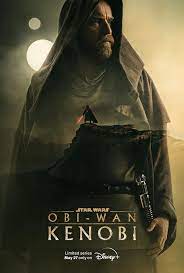
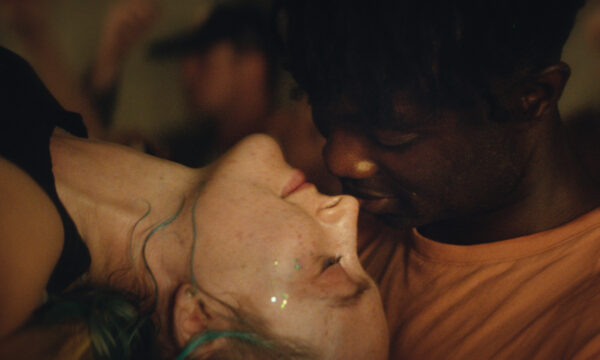



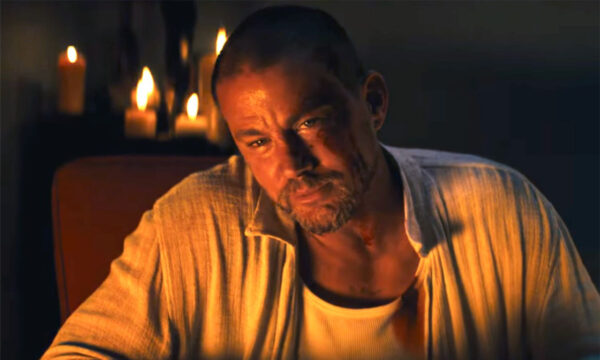
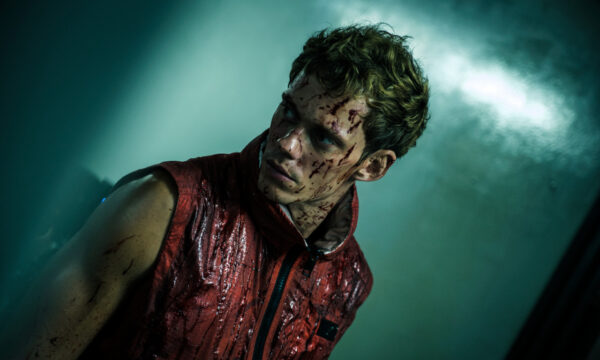
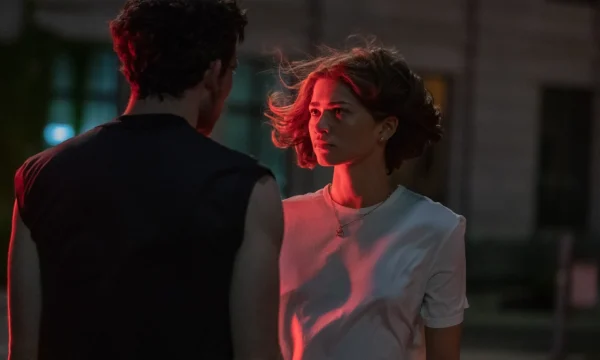
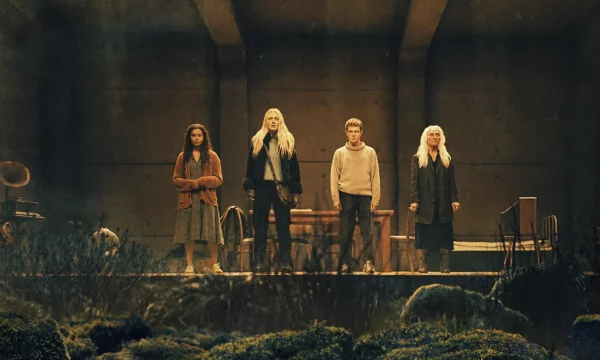
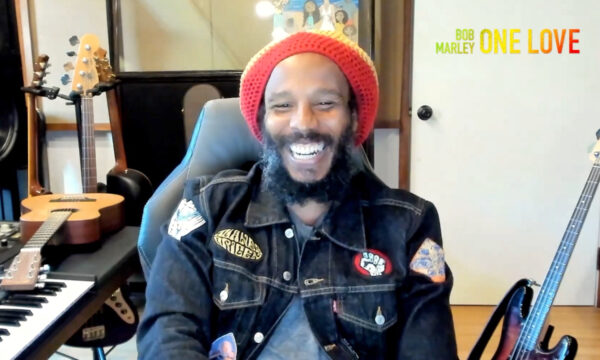

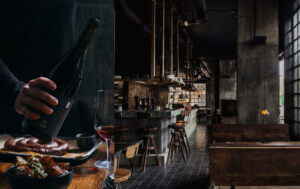


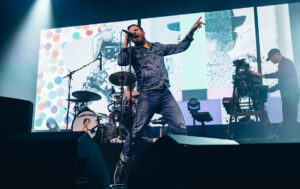


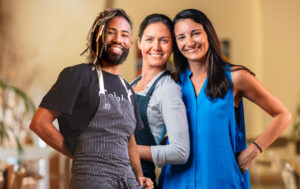

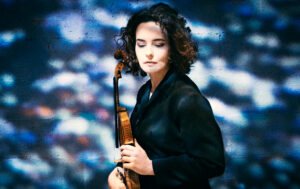
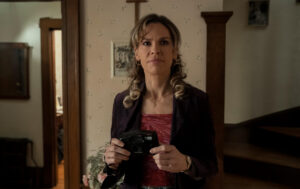
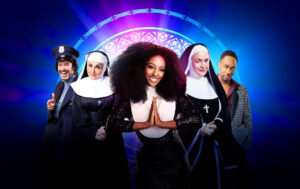
Facebook
Twitter
Instagram
YouTube
RSS